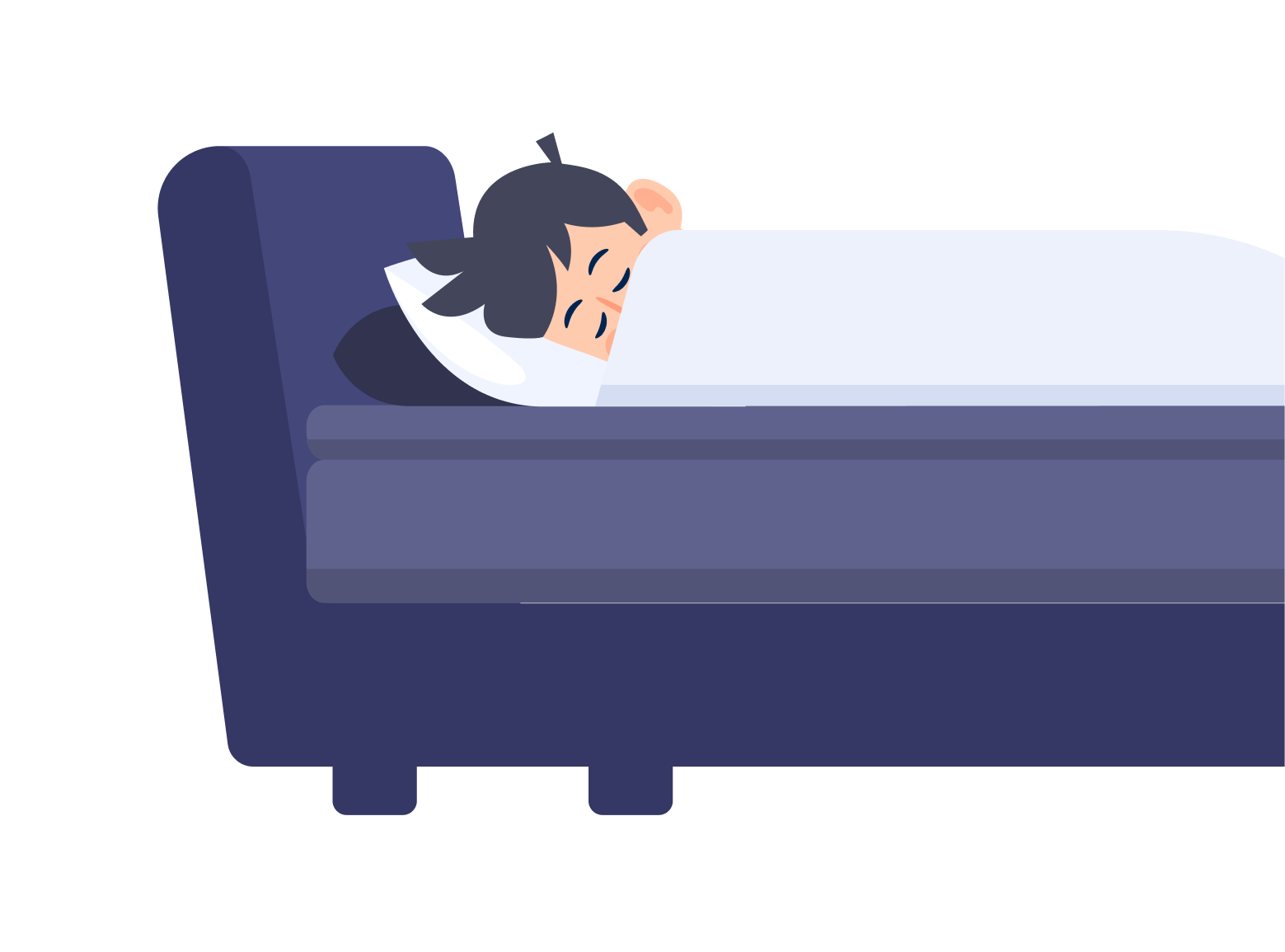We spend nearly a third of our lives asleep, and for much of that time, we are dreaming. We often dismiss these nightly visions as random, meaningless brain-noise. But what if they are one of your most powerful, innate resources for mental well-being? These intricate narratives are not just fantasy; they are a vital function of the human mind. They are your subconscious’s dedicated workshop for processing emotions, consolidating memories, solving problems, and healing from a-day-to-day stress and deeper trauma.
In this comprehensive guide, we’ll explore the profound connection between dreams and mental health. We will move beyond simple interpretation and into the neuroscience of *how* dreams work to regulate your emotions, boost your creativity, and provide a nightly map to your inner world. Understanding this process can transform your relationship with sleep and lead to greater self-awareness, resilience, and emotional balance.
Track your dreams and emotions with Dreamly — your private, intelligent dream journal on Android and iOS.
The Science of Dreams & the Brain’s ‘Overnight Therapy’
The core of dreaming’s benefit to mental well-being happens during REM (Rapid Eye Movement) sleep. During this stage, your brain is incredibly active—in some ways, more active than when you’re awake. However, the brain chemistry is unique. The amygdala (your emotional center) and hippocampus (your memory center) are on fire, while your prefrontal cortex (the center for logic and self-control) is powered down. This is why dreams feel so intensely emotional and often bizarre or illogical.
Crucially, neuroscientist Matthew Walker, author of “Why We Sleep,” notes that during REM sleep, your brain is “bathed” in a soup of neurotransmitters *without* norepinephrine (a key anxiety-inducing chemical). This allows your brain to re-process difficult or emotional memories in a “neurochemically safe” environment. It’s like therapy: you get to revisit the challenging event, but without the intense emotional sting. This is the very mechanism that helps you “get over” things and wake up feeling better about something that bothered you the day before.
How Dreams Function as an Emotional Regulator
Think of your dreams as a nightly emotional digestive system. Throughout the day, you accumulate a variety of emotional experiences—small anxieties, a conflict with a colleague, a moment of joy, a flicker of old sadness. These emotions, if left unprocessed, build up and contribute to stress and poor mental health.
Dreams take these emotional charges and weave them into symbolic narratives. This process does two things:
- It validates the emotion: By giving the feeling a story, your brain acknowledges its existence.
- It integrates the emotion: It connects the new feeling to older, similar memories, helping you make sense of it in the larger context of your life.
When you dream about an argument, you may not dream of the literal fight. Instead, you might dream of being in a car with no brakes or a house that’s flooding. The dream isn’t about the car; it’s about the *feeling* of being out of control. By processing this feeling symbolically, the dream diffuses its power, allowing you to wake with a sense of resolution or clarity. This is why a good night’s sleep is often the best antidote to a bad day.
The Role of Dreams in Memory and Learning
Your mental well-being isn’t just about managing negative emotions; it’s also about building competence, skill, and knowledge. Dreams are essential for memory consolidation. While you sleep, your brain sifts through the vast amount of information you acquired during the day. It decides what to keep (a new skill, an important fact) and what to discard (the color of the car that cut you off).
Dreams are the active part of this “filing” process. Studies have shown that people who dream about a task they just learned—whether it’s navigating a virtual maze or playing a new musical piece—perform significantly better on it the next day. The dream is strengthening the neural pathways associated with that new memory. This process builds confidence and mastery, which are cornerstones of stable mental health.
Unlocking Creativity and Problem-Solving
Have you ever woken up with the answer to a problem that seemed impossible the day before? This is a classic function of dreaming. Because the logical, rigid prefrontal cortex is offline, your brain enters a state of “hyper-associativity.” It can make connections between ideas and concepts that your waking mind, bound by logic, would never put together.
This “creative sandbox” is where breakthrough insights are born. Your dream-brain can explore “what-if” scenarios, test solutions, and approach problems from radically different angles. The famous story of scientist August Kekulé discovering the ring structure of benzene after dreaming of a snake eating its own tail is a perfect example. By paying attention to your dreams, you can gain access to a powerful, internal consultant that is working to solve your most complex personal and professional problems.

Understanding Nightmares and Stress Dreams
Nightmares and stress dreams (like being unprepared for a test, being late, or being chased) are unpleasant, but they are often a sign that your dream-brain is working overtime on a significant issue. Nightmares are not attacks; they are messages. They are your subconscious mind’s way of shining a spotlight on a profound fear or anxiety that your waking mind may be minimizing or ignoring.
In a way, these dreams are a “threat simulation.” Your brain runs drills of worst-case scenarios to prepare you emotionally, just in case. The key is to listen. A dream of being chased isn’t a prophecy; it’s a metaphor. It’s asking, “What am I avoiding in my waking life?” A dream of your teeth falling out might ask, “Where do I feel powerless or unable to communicate?” Seeing these dreams as ‘data’ rather than ‘threats’ shifts them from terrifying to informative, which is a massive step for your mental well-being.
The Message of Recurring Dreams
A recurring dream is one of the clearest and most urgent signals your subconscious can send. It’s the psychological equivalent of a “check engine” light. This dream repeats, night after night, because the underlying emotional issue it represents has not been resolved. It is a “stuck point.”
These dreams will often persist for years until you consciously acknowledge and address the waking-life conflict. For example, many people have recurring dreams of being back in school, unable to find their locker or class. This isn’t about school; it’s about a persistent, current-day feeling of being unprepared, tested, or fearing failure (imposter syndrome). The moment you identify the real-world source of that anxiety and take steps to address it, the dream will often fade away for good.
Lucid Dreaming for Conscious Well-being
Lucid dreaming is the state of becoming aware that you are dreaming *while* you are dreaming. For mental well-being, this is a game-changer. It offers a unique opportunity to interact directly and consciously with your subconscious mind. Instead of being a passive observer of your dreams, you become an active participant.
The therapeutic potential is enormous. If you are having a recurrent nightmare, you can become lucid and face the frightening figure. You can stop, turn around, and ask it, “Why are you chasing me?” or “What do you represent?” This act of conscious confrontation is incredibly empowering. It can resolve the core conflict the nightmare represents, effectively ending the dream’s cycle and helping you integrate its message of fear.
How to Start Your Dream Practice for Wellness
You don’t need to be an expert to benefit from your dreams. The practice of dream journaling is the single most effective way to build a bridge to your subconscious. Here’s how to start:
- Set Your Intention: As you fall asleep, tell yourself, “I will remember my dreams tonight.” This simple intention primes your brain for recall.
- Stay Still: When you first wake up, don’t move. Dream memories are fragile and are stored in short-term memory. Moving or thinking about your day can erase them. Lie still and “reach” for any lingering feelings or images.
- Write *Anything* Down: Keep a journal or the Dreamly app by your bed. Write down everything you remember—even if it’s just a single word, a color, or a feeling. The plot is less important than the *emotion*.
- Ask the Right Question: Don’t ask “What did this mean?” Ask, “How did this dream make me *feel*?” and “What in my waking life *feels* like this?” This is the key to unlocking its personal relevance.
When Dreams Signal a Deeper Issue
While most dreams are a healthy part of your mental well-being, sometimes they can signal a deeper issue that requires professional support. Healthy dreams *process* emotion; problematic dreams *replay* it without resolution. Be mindful if you experience:
- Persistent, debilitating nightmares that leave you afraid to sleep or cause significant distress during the day.
- Trauma-related nightmares that are exact, terrifying replays of a traumatic event. This is a hallmark of PTSD and requires specialized care.
- Dreams that consistently ruin your mood long into the next day, indicating the emotional load is too heavy for your brain to process alone.
If this sounds like you, please reach out to a mental health professional. Therapies like Image Rehearsal Therapy (IRT) are specifically designed to help resolve chronic nightmares and restore a sense of safety to your sleep.
FAQ About Dreams and Mental Well-being
Do bad dreams mean I have poor mental health?
Not necessarily. Nightmares and bad dreams are often signs that your brain is working hard to process intense emotions or stress. They are part of a healthy regulatory system. However, if they are persistent, debilitating, or linked to trauma, they may signal a need for professional support.
What if I can’t remember my dreams?
Everyone dreams, every night. Recall is a separate skill. Not remembering your dreams does *not* mean you aren’t getting the emotional benefits. If you want to remember more, the single best way is to keep a journal and write “I did not remember anything” each morning. This signals to your brain that this is important, and recall will slowly improve.
Are dream dictionaries useful for understanding my well-being?
Mostly, no. A symbol is deeply personal. A dog in your dream might represent comfort and loyalty. For someone who was bitten as a child, a dog represents fear. The meaning is tied to *your* personal emotions and memories, not a universal book. The feeling is the key, not the symbol.
Why do I dream about people I haven’t seen in years?
Your dream-brain uses “characters” as symbols. That person from high school likely represents a *quality*—perhaps insecurity, or first-love, or a sense of freedom. Your dream is using them as a metaphor to comment on a feeling or situation in your *current* life.
Can I control my dreams to improve my well-being?
Yes, this is known as lucid dreaming. With practice, you can learn to become aware that you are dreaming. This allows you to consciously engage with your dream, confront fears, or even practice skills, which can be highly empowering.
What do common stress dreams (teeth falling out, being late) mean?
These are classic anxiety dreams. Teeth falling out often relates to feelings of powerlessness, poor communication, or a loss of control. Being late or unprepared for a test (even if you’ve been out of school for 20 years) usually points to “imposter syndrome” or feeling overwhelmed and untested in your current life.








